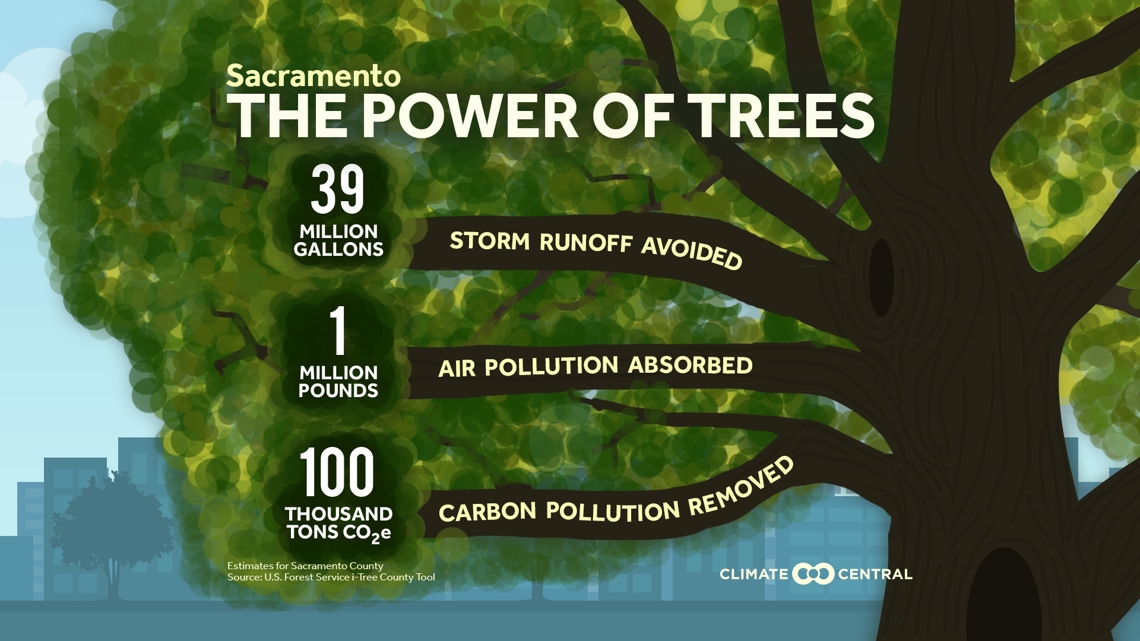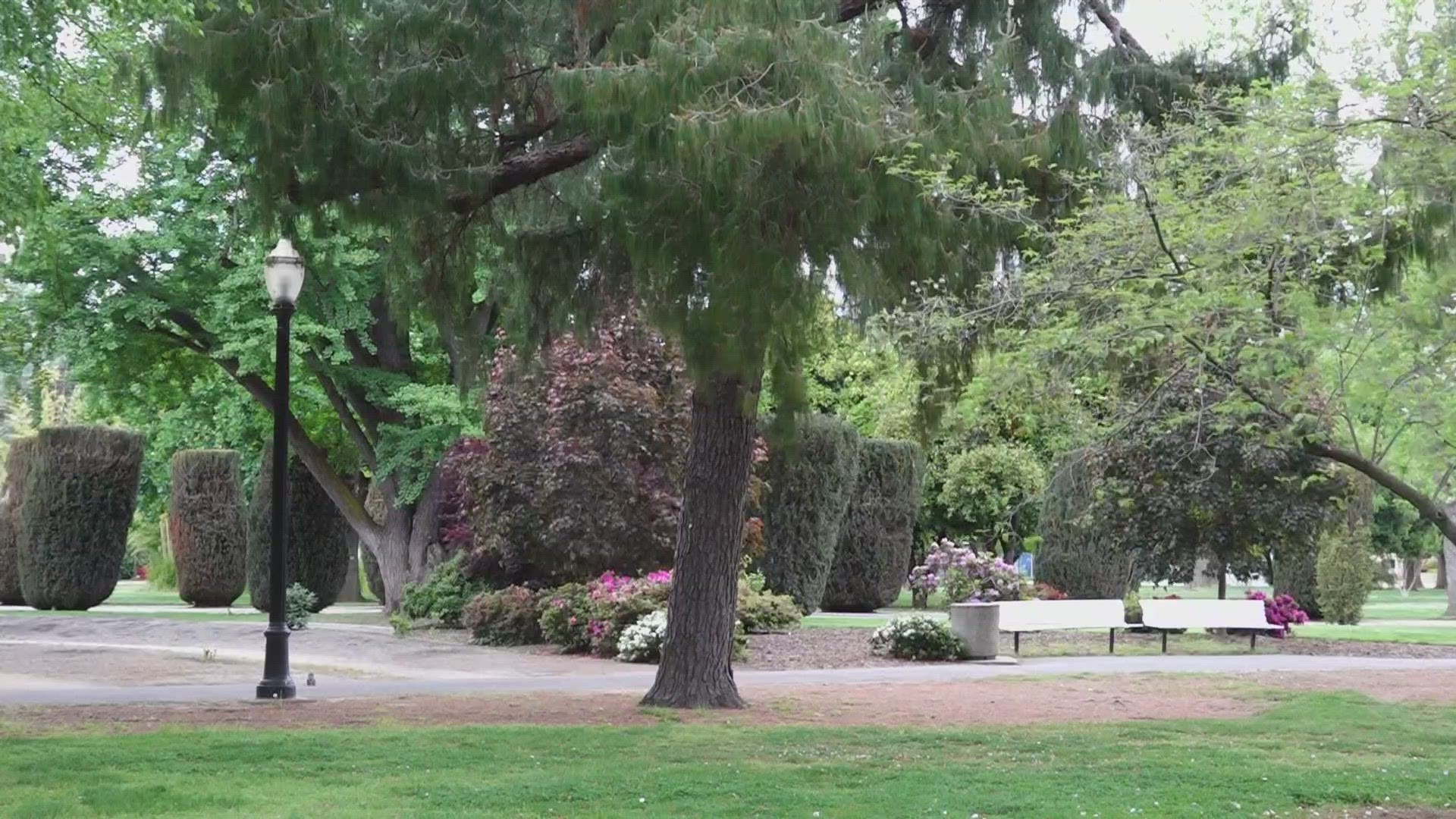SACRAMENTO, Calif. — Sacramento is often known as the City of Trees, but the tree canopy is largely absent in some communities. The city announced Thursday it's receiving nearly $2 million in grant funding to address this concern and increase urban forestry efforts as they continue to look at ways to combat climate change.
Congresswoman Doris Matsui, alongside Sacramento city leaders, says the $1.9 million will come from both the U.S. Forest Service's Urban and Community Forestry Grant Program and the EPA's Environmental Justice Government-to-Government Grant Program.
Matsui says it's an important step in fighting climate change using nature-based solutions. Trees are a powerful tool in mitigating impacts due to a warming environment, including limiting dangerous storm runoff, absorbing dangerous air pollution and carbon pollution.
Climate Central, an independent group of scientists and communicators, found in their analysis using the U.S. Forest Service’s i-Tree data that Sacramento's trees helped prevent 39 million gallons of storm runoff, absorb 1 million pounds of air pollution and remove 100,000 tons of carbon pollution.


Matsui says the first focus will be on neighborhoods lacking equitable planning and need to build up the urban forest. She added as Sacramento expands the need for more housing, new developments need to be mindful of incorporating this type of landscape in their design.
Rachel Patten, city of Sacramento sustainability program specialist, says the grant funding comes as the city looks to increase their tree canopy from 19% to 35% by 2045. She says Sacramento has a historical legacy of being called the City of Trees, but it isn't true in every neighborhood. The Sacramento Urban Forest Plan will look to change that, creating a more equitable distribution.
Patten says the city is also looking at the types of trees to plant. The loss of hundreds of trees due to wind damage over the past two years have provided insight to the root system, drought vulnerability and heat stress. The new trees selected will be better to adapt to the current and future climate.
Another part of the plan will look at how to spread awareness on the most efficient way to water trees. Patten says it takes less water to feed a tree than to flush a toilet every month. The key is making sure to water properly with a deep water drip. She also points to the Sacramento Tree Foundation for resources.
Patten says they hope to plant saplings next year. The young trees tend to have a more adaptable root system which will support more rapid growth and sustainability.
The Sacramento Urban Forest Plan is open for public comment now through June 21, 2024.



















